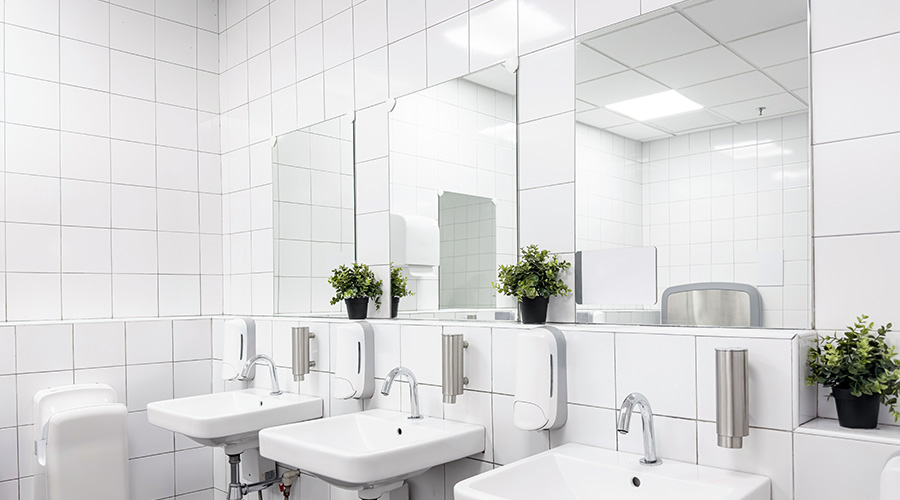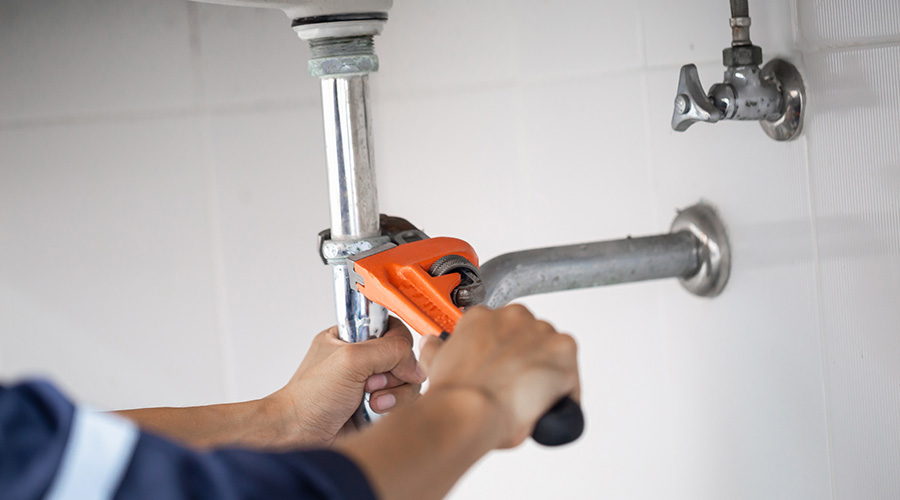New-generation Maintenance Issues
There is a growing realization in the plumbing industry that commercial and institutional buildings are not isolated from their surroundings.
Today’s buildings use large amounts of potable water and generate large amounts of sewer waste. Also, green spaces are being replaced with hard roofs on buildings, which are surrounded by large, hard-surface parking lots. The result of these parallel trends is fewer places for water to re-enter the earth.
Manufacturers also are faced with a number of myths among managers and product specifiers, namely:
- Water closets have to use 1.6 gallons per flush (gpf).
- Urinals use 1 gpf.
- Hand washing requires 1.5 gallons of water per minute (gpm).
- Showers use at least 2.5 gpm.
The plumbing industry is responding the these myths and changing priorities in facilities by producing fixtures that use less water and, as a result, produce less waste. But because these fixtures use technology advances not available with standard fixtures, managers also should be aware they often demand new installation and maintenance routines.
Waterless Urinals
Large and small plumbing manufactures alike are producing waterless urinals. The fixtures do not have to be flushed after every use and do not require flush valves. The drain is connected to the waste line, similar to a standard urinal. The fixture has no water connection.
These fixtures dispel two additional plumbing myths — namely, that water has to flush urine and that water is always cleaner than no water. This new technology requires people to rethink their beliefs.
Waterless fixtures can reduce the amount of waste used by a typical building. One of the important features of a sustainable building is to how efficiently it uses water. Waterless urinals can be an important element in earning a LEED certification.
Such fixtures use a special liquid seal in the trap that keeps gasses from escaping while letting urine pass through. Small amounts of trap-seal liquid pass through with the urine, so as a result, the liquid trap seal material eventually must be replaced.
If it is not replaced, the trap will be open to allow sewer gasses to escape. Manufactures recommend the replacing the trap seal after several thousand flushes or every one-three months, depending on use. Some units use a cartridge-type system that requires replacing the trap, while others use bottles with the trap liquid poured into the traps.
Similar to standard, flush-type fixtures, waterless urinals should be wiped down and cleaned daily. The housekeeping staff must be familiar with this requirement and develop a regular schedule of these tasks.
Because the fixtures do not use flush valves, they eliminate problems that arise when a flush valve sticks in the open position, resulting in overflows. It is important for the housekeeping staff to understand different manufacturers’ requirements because each manufacturer has a different trap seal maintenance method.
Finally, local code requirements differ throughout the country. While these products generally comply with the 2006 International Pluming Code, local requirements might vary.
Dual-flush Water Closets
These water closets available from major plumbing manufacturers are easy to install and require no extra maintenance. They reduce the amount of water and waste by using a flush-valve lever or buttons for two different types of flushes.
The first type uses the standard 1.6 gpf. The second type dispenses less than 1.6 gpf, usually 1.1 or 0.8 gallons. The lower-flush option will flush paper and liquids, while the full flush is designed for solids.
Signs installed at the fixture educate users about the system. The cleaning routine is the same as that for any other fixture. Dual-flush handles are available from most manufactures, so a standard flush-valve fixture can be retrofitted to work as a dual flush fixture.
Sensor-operated Fixtures
A range of these fixtures is available.
AC units. The type that uses AC electrical power with either a hard-wired connection or GFI plug tend to be the most reliable, due to the quality of the solenoid valves. Installation requires planning to make sure electrical power is available.
It is important to remember that these units will not operate if a building’s power is interrupted. As a result, some owners install these products to use emergency power when it is available.
Battery-powered units. These fixtures are not far behind AC units in quality. They operate during a power outage, and a high-quality unit can provide years of trouble-free operation. The housekeeping staff will need to develop a schedule to change these batteries regularly.
Solar-powered units. The first generation of solar-powered units is now on the market. These units require no AC power and no battery maintenance. Managers should avoid specifying these units for toilet rooms with no natural light or where overhead lights are not frequently used.
Water-turbine units. These units use the water flow through the fixture to operate a small turbine that generates power to recharge the battery. As with solar units, these units are new to the market.
Also, the maintenance staff needs to decide on the location of the mixing valve. In some locations, the mixing valve is only accessible to the maintenance staff, and a user has no water-temperature choices. Other units have a control lever so users can regulate the water temperature.
It is important to remember that many new codes require limiting the hot water temperature to ADA-compliant fixtures. As a result, a small mixing valve might be required at the fixture.
Low-flow Water Closets
Federal mandates limit water closets to use no more than 1.6 gpf. New, low-flow water closets have taken advantage of technology advances and can flush solids with less than 1.6 gpf. Many such units comparably priced to non-low-flow models.
Facilities such as hotels, apartments and dormitories often use flush-tank water closets. There are two types of flush-tank fixtures:
Pressure-assisted units use a pressure tank inside the fixture’s tank and use incoming water pressure to help clear solids from the bowl. It is important for the maintenance staff to know that these fixtures require different maintenance procedures than gravity-type units.
Also, most major manufactures now make a high-quality, gravity-type, low-flow water closet. The flush valve inside the tank is better than the flappers that have been around for decades. But because old flappers are easy to repair, maintenance workers have grown accustomed to the lower-quality materials. New flush-valve systems cost more to replace than older models, but they will not require replacement as often.
Low-flow Showers
Showers must use no more than 2.5 gpm per head. Over time, users have become accustomed to this amount of water and might complain if they believe they are not receiving their allotted amount of water.
Most complaints about showers operating improperly occur when the screen or flow restrictor in the showerhead is blocked with debris from the domestic waterline feeding the showerhead. Routine maintenance to clean these units will eliminate most problems.
High-quality showerheads designed for less than 2.5 gpm work very well and tend to generate very few complaints.
Lower-quality, 2.5 gpm showerheads that feature only a lower-flow restrictor in the head tend to cause problems because they were not designed for the low flow of water. Low-flow showerheads reduce the load on the hot-water system, which could result in lower energy use and less maintenance costs related to water heaters.
It is important to note that low-flow showers will take longer to warm up when first turned on. This situation arises because the hot-water line feeding the showers that are not on a recirculation loop cool down when not used in a few hours.
With less water flowing to the fixture, it takes longer for the water at the shower to heat up. As a rule of thumb, if the showerhead uses 25 percent less water, it will take 25 percent more time to get hot water to the showerhead.
Winston Huff, CPD, LEED AP is a project manager, plumbing designer and LEED facilitator with 25 years of experience at Smith Seckman Reid Inc. — www.ssr-inc.com — a full-service engineering design and facility consulting firm.
Related Topics:











